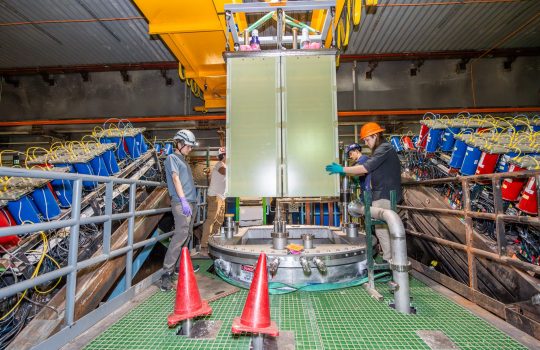Crews stay busy with construction at SURF
Black Hills Pioneer, March 26, 2024
As excavation of the underground facilities for DUNE nears completion, crews are now working on laying concrete floors and spraying shotcrete on the walls of the caverns. The next priority is to prepare the south cavern for cryostat erection by installing sprinklers, fire alarms, an elevator, and overhead cranes

